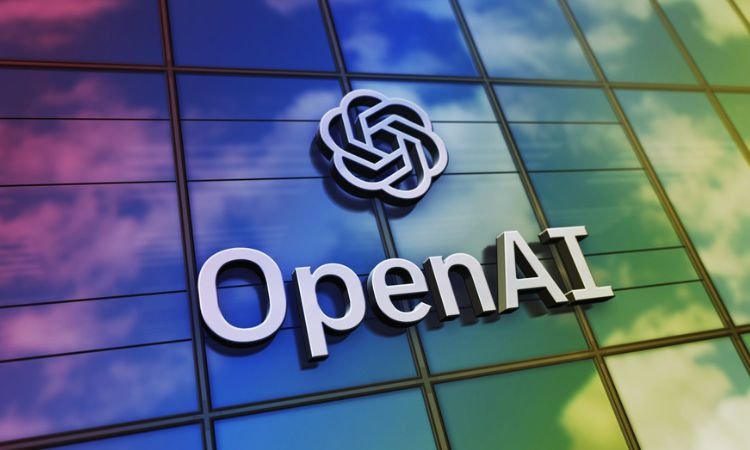What happens when one of the biggest names in artificial intelligence drops a major upgrade that nobody saw coming? Well, the tech world watches with wide eyes—and that’s exactly what happened in the last 24 hours when OpenAI revealed its newest model: GPT-4o. The “o” in GPT-4o stands for “omni,” and trust us, there’s a very good reason for that. This isn’t just an update. It’s a giant leap forward in AI capability, and it’s already being called a game-changer.
If you’ve been using ChatGPT or keeping an eye on AI tools, what you’re about to read might completely change how you view tech. And if you’ve never used these tools before? This could be your reason to start.
What Is GPT-4o? Breaking Down the Buzz
GPT-4o is OpenAI’s latest and most advanced AI model, released just yesterday. It expands on the capabilities of its predecessor, GPT-4, but takes things to a whole new level. “Omni” in its name refers to its ability to handle text, voice, and visuals—all at once.
Previously, even the most powerful AI systems like GPT-4 had separate models or relied on finetuning to process different input types. But GPT-4o is truly multimodal, meaning it can:
- Understand and respond to voice in real time
- View and interpret images or videos
- Function across different platforms, smoothly combining text, audio, and imagery
Imagine having a conversation with your voice assistant and it responds instantly—not with a robotic tone, but naturally, and even with emotion. That’s the promise of GPT-4o. Feels like we’re in a sci-fi movie, doesn’t it?
GPT-4o’s New Features That Are Taking Over the Internet
So, what exactly are people raving about? Here are the top GPT-4o features that have everyone talking:
1. Real-Time Voice Interaction
We’ve all shouted “Hey Siri” or “OK Google” at our phones. But this? This is next-level. GPT-4o can carry on a fluid, near-instant voice conversation with you. And it doesn’t just process words—it picks up on tone, mood, and even emotion.
During OpenAI’s live demo yesterday, GPT-4o responded to human prompts in barely 232 milliseconds—almost as fast as a human response! The reaction online? Pure astonishment.
2. Emotional Intelligence Somewhere Between Siri and Scarlett Johansson
Okay, not exactly like Her, but GPT-4o is way more emotionally in-tune than its older siblings. It can modulate its voice to express joy, sadness, surprise, and curiosity. That means your chatbot could soon sound a lot more… well, human.
3. Computer Vision Capabilities
GPT-4o can now understand and analyze images, charts, and even your phone screen. That’s huge. In the demo, it helped a user solve a math problem they photographed. It even offered helpful suggestions for coding issues by looking at the code on-screen.
4. Multimodal Input Support
While earlier models like GPT-4 were good with either text or images, GPT-4o works with everything—all at once. That means you could show it a picture of a meal, ask it if it looks healthy and then ask for a low-carb version of the recipe—by voice.
5. Massive Speed Boost and Lower Cost
One of the most underrated but powerful upgrades? GPT-4o is way faster and cheaper to access. The experience, especially on ChatGPT, is now smoother than ever. And yes, OpenAI is making many GPT-4o features available for free users too.
Who Gets Access to GPT-4o?
Here’s the good news: You don’t need to be a tech wizard or billionaire to use GPT-4o. OpenAI is rolling out GPT-4o to free ChatGPT users gradually, and ChatGPT Plus subscribers will get prioritized access.
Highlights:
- Free users: Gain access to GPT-4o’s text capabilities (and a few limited voice/vision features)
- Plus users: ($20/month) Unlock full power, including GPT-4o voice, vision, memory, and file features
Where You Can Use GPT-4o Right Now
Think GPT-4o is just for ChatGPT.com? Think again. It’s being integrated across the OpenAI ecosystem:
- ChatGPT web and mobile apps
- OpenAI API (great for devs and businesses)
- Third-party integrations (like in Microsoft products via Copilot)
In short, GPT-4o is showing up everywhere, and fast.
How Does GPT-4o Compare with GPT-4?
Okay, let’s get real for a second. If you’re already using GPT-4, you might be wondering—do I really need GPT-4o? Here’s a side-by-side that clears things up:
| Feature | GPT-4 | GPT-4o |
|---|---|---|
| Multimodal Support | Limited (mainly text) | Full (text, audio, vision) |
| Voice Interaction | Basic TTS (text-to-speech) | Real-time, emotional responses |
| Speed | Fast | Faster (avg. 320ms for voice) |
| API Cost | Higher | Lower |
| Coding/Math Alerts | Good | Smarter with screen reading |
In a nutshell? GPT-4o takes everything GPT-4 did well—and makes it better, smoother, and more natural. Oh, and it speaks with personality now too.
Reactions from Around the Web
Across X (formerly Twitter), YouTube comments, and Reddit threads, users are calling GPT-4o “next-gen tech” and “the beginning of a new AI age.” Influencers like Marques Brownlee and Lex Fridman have already shared glowing impressions.
One user even joked, “If Siri sounded like GPT-4o, I’d never shut up.” Honestly? Same.
Companies are also watching closely. As GPT-4o integrates into more tools, developers will soon be able to make smarter virtual assistants, teaching apps, accessible tools for differently-abled users, and more.
How Can This Impact Everyday Life?
You might be wondering: Cool tech, but what does it mean for me? Fair question. Here’s how GPT-4o could slip into your daily life:
- Language Learning: Chat with the bot in Spanish, French, or Japanese—all in natural, flowing speech.
- Study Help: Snap a pic of your textbook page and ask questions aloud.
- Work Presentations: Feed it your slides and get talking tips or visual critiques.
- Shopping/Product Support: Use GPT-4o to troubleshoot gadgets or help compare kitchen appliances.
Analogy Time: GPT-4o Is to GPT-4 What iPhones Were to Flip Phones
Yep, we said it. Remember how smartphones replaced everything from cameras to MP3 players to physical maps? GPT-4o is starting to do that for digital communication, productivity, and even creativity.
From customer service to accessibility upgrades for the visually impaired, GPT-4o could soon make a real-world difference far beyond just techies and hobbyists.
But—What About the Downsides?
With great power comes… well, great questions. People are already asking:
- How will privacy be maintained if an AI can see and hear in real time?
- Will it be used ethically in education, government, or the workplace?
- Could companies replace human jobs with GPT-4o-powered bots?
OpenAI has tried to address these concerns by building in safety layers, including content filtering, privacy controls, and voice consent protocols. But as always, user responsibility and regulation play a big role.
Final Thoughts: GPT-4o Is Here to Stay—and to Lead
In just 24 hours, OpenAI’s GPT-4o has shifted the conversation around AI yet again. It’s strong, fast, affordable, and—most importantly—it feels human. Whether you’re a student, solopreneur, content creator, or just someone curious about the future, GPT-4o is ready to chat.
The big question now? Not just what GPT-4o can do—but what you’ll do with it.
What’s Next? Get Involved
🔥 GPT-4o is already trending across #AInews, #OpenAIReleases, and #ChatGPT on social media. Want to try it for yourself? Head to ChatGPT’s site or app right now and see if you’ve been upgraded early.
Let us know below: What do you think of GPT-4o? Does it excite you, scare you, or both?
Your voice matters in shaping how we use the most human-like AI the world has ever seen.


